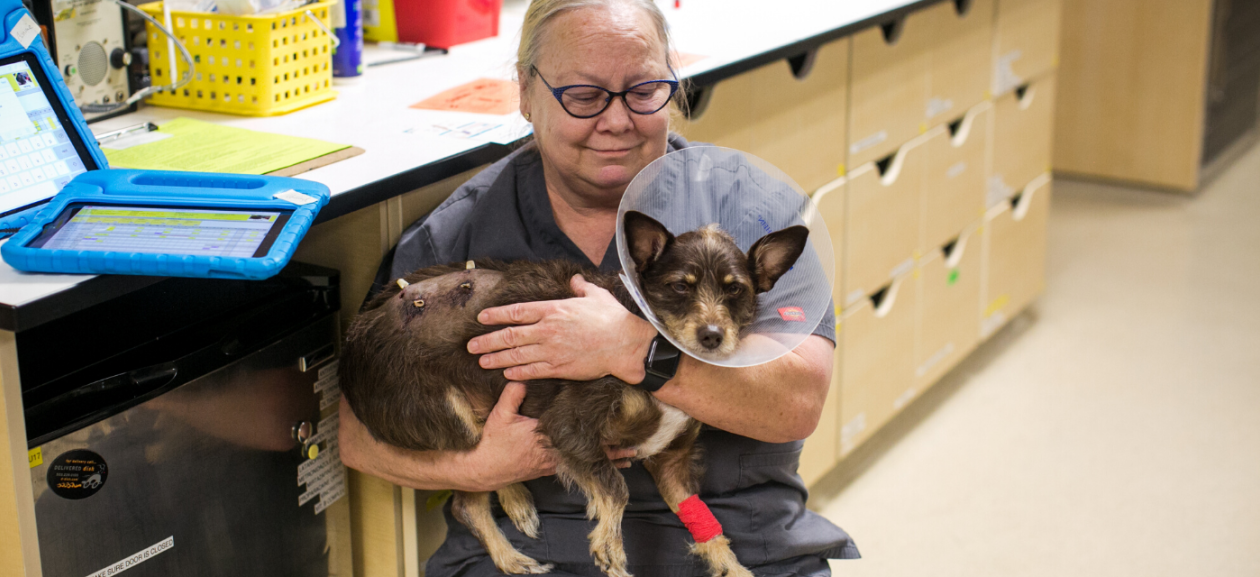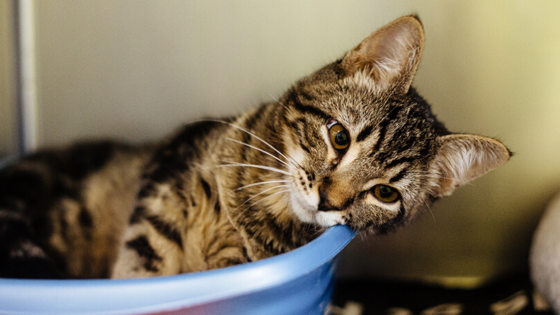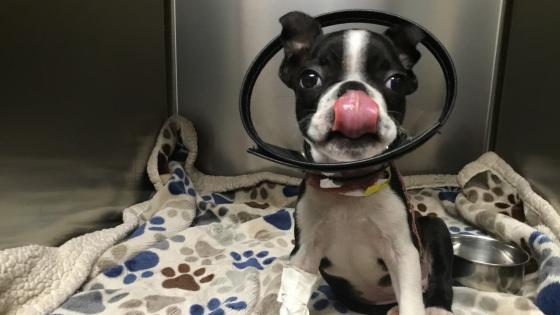
Dog Bite Prevention Tips
As we continue to take the necessary precautions to help reduce the spread of COVID-19, one thing many pet owners are doing is getting outside with their dogs. But with that comes other dogs with their owners who are also looking to enjoy the outdoors. The need to be outside and enjoy some fresh air comes the possibility of interactions with other dogs that can lead to dog bites and injuries. Currently, DoveLewis is seeing an increase in dog bites in our hospital right now.
Any dog can bite - regardless of size or breed. Even the sweetest pet can bite if provoked. Most dog bites are preventable, and there are many things you can do at home, especially as many of us work from home currently, to help prevent them.
Why Do Dogs Bite?
Dogs can bite for many reasons, but it is commonly in reaction to something. If a dog is in a stressful situation, it may bite to defend itself or its territory. They can bite because they are scared, have been startled, feel threatened or feel they need to protect something that is valuable to them, like their food or a toy.
Dogs might also bite because they aren't feeling well and want to be left alone. You might also see dogs nip and bite during play. Even though nipping during play might be fun for the dog, it can be dangerous. What may start out as playful can change to aggressive in an instant.
Amidst the COVID-19 pandemic, we are facing many changes in our routines and animals are too. We are all adjusting to the situation and pets in the family are also disturbed and confused by the sudden change in familiar habits. This can be stressful to them as they adjust to the new routine while also seeing more dogs than their usual norm when outside.
How to Prevent Dog Bites
- Think about basic training for your dog and continue to keep up your dog's training throughout its life to reinforce the positive behaviors you've taught it. Consistently reward your dog for desirable behavior because dogs aim to please their people. As many of us are now working from home, now is a great time to start or continue your training with them.
- Socialize your dog. With social distancing in place, this may be difficult but socialization is a good way to help prevent your dog from biting. Socializing your pet helps your dog feel at ease in different situations but do continue to remain cautious in these social settings. By introducing your dog to people and other animals, it feels more comfortable in different situations. It's also important to use a leash in public places to make sure that you are able to control your dog and monitor the situation.
- Expose your dog regularly to a variety of situations such as other dogs, loud noises, large machines, bicycles, or anything else that might spark fear for them. Start this training slowly with your dog and keep the experiences positive through verbal or physical praise, treats, etc. This will help them begin to feel more comfortable in these situations.
- Always keep your dog on a leash or in a fenced area. Know your dog well before letting it off its leash only in permitted areas. Keep your dog in sight at all times. If you are outdoors with your dog and you see a stray dog that is running free, do not approach it. Even if your dog is gentle and friendly, you have no way of knowing the temperament of the other dog.
- Pay attention to your dog and know when things may be leading to aggression. If you can't control the situation or your dog's behavior, you may have to remove your dog before things get out of hand. Reading your dog's and other dogs’ body language during any situation can also be helpful. Dogs rely on vocalizations, body gestures, and postures to express themselves. It can provide helpful clues as to whether a dog is feeling stressed, frightened, or threatened. Here are just a few clues that indicate a dog is agitated and could bite:
- Lunging, barking, growling or snarling
- Stiffening (freezing of the body)
- Looking away
- Hard dark pupils
- Whale eye (flashing of the whites of the eyes just prior to the bite)
- Trying to get away from the area
- A high, stiff tail wag (when a tail moves to a vertical position or arches over the back, it can indicate that the dog is aggressive)
- Lips drawn back (this may look like a submissive grin but can also be a sign of stress)
- Lips forward (this often happens just prior to a growl with the lips tightening)
- If you suspect or know that your dog has fearful or aggressive tendencies, always warn others. Don't allow your dog to approach people and other animals unless the situation is strictly controlled.
- Keep your dog's vaccinations current, especially its rabies vaccination.
What Should I Do If My Dog is Bit?
If your dog is bitten by another dog, remove your dog from the situation. Being careful to not become involved or injured in the process. It is important to know that you should never physically get in the middle of two dogs fighting or try to grab their collars. If you put your hand or any other body part anywhere near the dogs, you will more than likely be injured as well. You can spray them down with a water bottle, make a lot of noise to distract them, use objects to break them up like an umbrella or blanket, or if you have to intervene physically, try the wheelbarrow method.
“If your dog is bit, remain calm! It is important for you to take a deep breath and to not become injured yourself.” says Technician Training Specialist Jessica Waters-Miller, CVT, “And it is important to have your dog evaluated by a veterinary professional as many of those wounds are not only painful, or hidden behind hair but can also go deeper than what you can see. It is always better to have peace of mind by visiting a veterinary professional.”
If your dog isn’t able to walk, you should carry them, but also be cautious because your dog may bite when injured due to pain or being scared. Wrapping a towel around them can also help calm and restrain them if you have one available. As Jessica said, you may not see the full extent of the injury and what may be happening inside the puncture wound so dog bite wounds should be assessed by your local veterinarian or emergency animal hospital.
It’s also important to gather as much information as possible. If the owner is present, ask if the dog is up-to-date on their rabies vaccines and collect any contact information from the pet owner whenever possible.
How Humans Should Interact Safely With a Dog
It’s very easy to get excited when you see a dog. However, a dog can quickly turn on a human it doesn't know. Nearly 5 million people, the most common being children, get bitten by a dog every year.
So it's important for you and any children to know how to interact with dogs especially how and when to approach one:
- Never try to approach or touch an unfamiliar dog without first asking for the owner's permission. If the dog's owner isn't present, we recommend not going near the dog since you may not know their temperament and how they’ll react.
- Never approach a dog that's eating, sleeping, or caring for puppies. Dogs in these situations are more likely to be protective and are easily startled.
- Don't approach, touch, or attempt to move an injured dog. Instead, contact a veterinary professional or animal control for assistance.
- When you're meeting an unknown or stray dog, allow them to come to you. Crouch down or turn to the side. These are neutral non-threatening positions. Let them approach and sniff your hand before you pet them.
- If you are cornered by what appears to be an aggressive dog, remain as still as possible and avoid eye contact with them. Do not run or scream. When the dog stops paying attention to you, slowly back away.
Recent Posts
Spring Pet Safety Tips
With spring in the air, pet owners should be aware of potential seasonal hazards. While you enjoy the longer, warmer days, keep these tips in mind!
Be Aware of these Common Pet Toxins
March is National Pet Poison Prevention Month and as a hospital that encounters many cases of toxicity in household pets, we want you to be in the know to prevent future ER visits. Review the following household and outdoor toxins to steer your pets clear of ingesting them.




